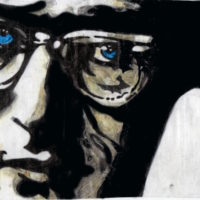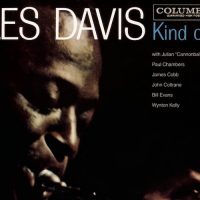The story of one of jazz’s most important pianists continues…
Last year brought the reissue of Bill Evans’ second album, the delightful but overlooked Everybody Digs Bill Evans, remastered with updated liner notes from original producer Orrin Keepnews.
Last month, Evans’ follow-up album has also been released again as part of the Keepnews Collection re-issue project. Like virtually any new Evans release—even of previously widely distributed material—it’s a welcome addition to the catalog.
It had been over a year since Bill Evans recorded Everybody Digs Bill Evans, and back in the late 1950s, that was nearly an eternity. During that intervening time, Evans worked at making the transition from a sideman to a full-time leader, spending much of 1959 going through a multitude of drummers and especially bass players. Finally, he settled on old friend Paul Motian and a young, innovative bass player Motian had suggested, Scott LaFaro.
This unit soon clicked and so when Evans’ record producer Keepnews called up Evans to encourage him to make a long-overdue return to the studio, Evans felt he was ready.
What transpired in these sessions marked the beginning of a fatefully brief but historically important eighteen month period in which these three men made an immense impact on the piano trio format. Never before had a trio played so tightly together and freely at the same time. While the leader at the piano remained more than equal than the other two, the role of the drummer and bass player grew enormously in stature. It’s as if the whole trio concept took a quantum leap on those final days of the 1950’s.
“Come Rain Or Come Shine” kicks off the standards-heavy group of songs. Evans states the melody with block chords while LaFaro is providing his own interpretation of the same melody. Despite of the liberties he takes, LaFaro remains remarkably complementary of Evans’ playing. The leader mixes up single, right-hand lines fills with full chords during a brief solo turn before the tune ends at a succinct 3:25.
“Autumn Leaves” in Evans’ hands is sprightly but soon goes into an unexpectedly early solo by LaFaro, a clear measure of how much confidence Evans had in his 23-year-old bassist. Soon, the two of them are playfully engaging in call-and-response before Motian signals them back to the steady groove of the song’s beginning.
On “Witchcraft,” LaFaro makes several of his trademark flights upstairs while Evans swings hard. “When I Fall In Love” is one of the slower selection of the album, but that doesn’t keep Evans’ from making some pretty astounding runs up and down the keyboard that’s brimming with ideas. The first of the two Evans originals, the brief “Peri’s Scope,” follows. Listen for Motian’s subtleties that seem to push Evans along without being indulgent.
“What Is This Thing Called Love?” is a forlorn ballad transformed into a snappy, dynamic tune by this trio; everyone is sizzling on this cut. Contrast that to the subdued Rodgers-Hart song “Spring Is Here,” where Evans & Co. play it in a quiet but heartfelt fashion.
Evans’ cover of the Disney classic “Someday My Prince Will Come” beats Miles Davis’ better known rendition by a couple of years. It is likewise played as a waltz, and Evans dances all around the main theme of the song while LaFaro and Motian form a tight foundation that makes Bill’s flights of fancy possible.
“Blue In Green” closes out the “originally issued” lineup of selections. This ballad, of course is the same recorded months earlier on Miles’ Kind Of Blue, also featuring Evans on piano. While “Blue” is normally accredited to Davis and Davis alone, for Portrait it’s co-credited to Evans, at Evans own insistence. Evans had later claimed in an interview that the composition was written entirely by him (one of the few times Evans was known to be unabashed about anything) and given the comparison of this tune to ones credited to him like “Time Remembered,” it really fits his composing style better than it does Miles’.
Regardless, “Blue In Green” is transcendent in its depth and beauty and even though two other takes are appended to this collection at the end, I can’t get enough versions of this song. As in the earlier session with Miles, Evans playing is genuinely affecting but in the right doses. The Davis version still gets the slight nod for the trumpet player’s gorgeously expressive statements on it, but LaFaro’s equally lyrical lines brings these recordings nearly up to the level of the original.
As with all old jazz records that are reissued and remastered on CD, this one gets supplemented with a handful of the best alternate takes. The forth take of “Come Rain Or Come Shine” presented here is good, but does sound a little flat compared to the chosen fifth take. There’s the aforementioned two extra versions of “Blue In Green.” The ninth take of “Autumn Leaves,” although recorded in mono only, is chosen because this version was believed to be superior to any of the versions captured in stereo.
Like its predecessor Everybody Digs Bill Evans, Portrait falls under one of Evans’ more transitional recordings. But as it is with the records by towering figures such as Miles, Coltrane and Monk, to name a few, the transitions were usually far more intriguing and of better quality than the best works of lesser artists. As the starting point for that short journey to the fabled Village Vanguard Recordings, this record is worth the purchase for that reason alone.
The 24-bit remastering, the inclusion of previously-unreleased takes and Keepnews’ fascinating first-hand accounts contained within the updated liner notes provide reasons to get Portrait a second time.
- Nick Millevoi – ‘Moon Pulses’ (2024) - April 23, 2024
- Cannonball Adderley – ‘Poppin’ in Paris: Live at L’Olympia 1972′ (2024) - April 20, 2024
- Christian Marien Quartett – ‘How Long Is Now’ (2024) - April 18, 2024




